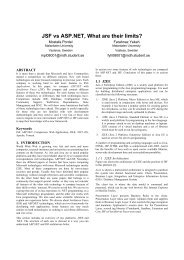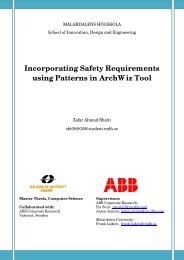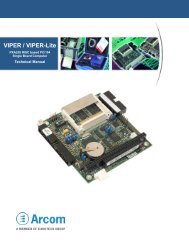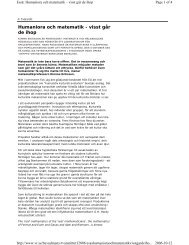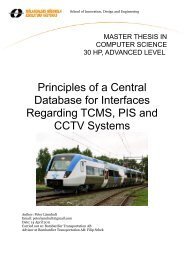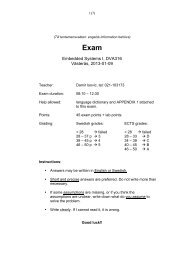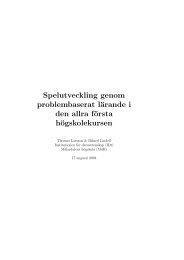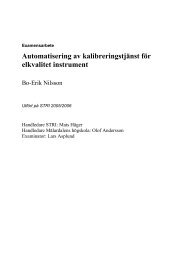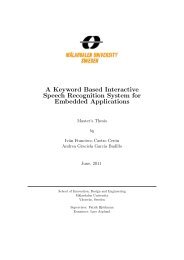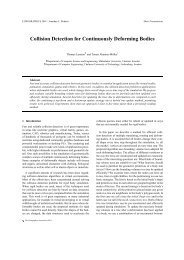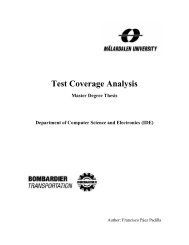UML PROFILE FOR SAVECCM - Research
UML PROFILE FOR SAVECCM - Research
UML PROFILE FOR SAVECCM - Research
You also want an ePaper? Increase the reach of your titles
YUMPU automatically turns print PDFs into web optimized ePapers that Google loves.
SaveCCM<br />
Unlike components, switches can not be activated, they respond instantly at the<br />
arrival of data or trigger signal on some of the input ports. Switch does any other<br />
computation except evaluation of connection conditions.<br />
To use switch for pre-run-time static configuration, fixed values need to be<br />
statically bound to the data or combined input ports. Switches can also be used<br />
dynamically e.g. for specifying modes and mode-switches, each mode<br />
corresponding to a specific static configuration. By changing the port values at runtime,<br />
a new configuration can be activated, thus achieving a mode-shift.<br />
5.3.3 Assemblies<br />
Assembly is an encapsulated subsystem. Its internal structure, subcomponents<br />
and interconnections are hidden from its environment and can be accessed only<br />
through assembly ports.<br />
Contrary to components, assembly can not be triggered. Data and trigger<br />
signals are immediately processed. Therefore, assembly should not be considered<br />
as a component composition mechanism but as way of naming a collection of<br />
components and hiding its internal structure.<br />
5.3.4 Ports<br />
As it is already mentioned, SaveCCM differentiates several kinds of ports.<br />
Referring to port’s direction, port can be input or output port, and referring to the<br />
signal type, port can be data, trigger or combined port. Component input ports, the<br />
output ports of the whole system, and switch set ports, are one-place buffers with<br />
overwrite semantics. The other ports are only conceptual interaction points<br />
through which data passes immediately.<br />
Every data port has its type and optionally an initial value.<br />
An external port is a special kind of port that is not connected with any other<br />
port in the model, but has an extra label mapping it to some external entity (for<br />
example to I/O-ports, interrupts, and real-time database pointers). The format of<br />
this label depends on the external entity to which the port is mapped. External<br />
ports are not allowed internally within a composite component.<br />
5.3.5 Connections<br />
Connections define how data and control can be transferred between<br />
components. SaveCCM offers two types of connections: immediate and complex.<br />
In SaveCCM reference manual [SaveR 07], immediate connection is defined as a<br />
"loss – less, atomic migration of data or trigger signals from one port to another, as<br />
would typically be the case between components located on the same physical<br />
node". However, in distributed systems and in early stages of modelling, another,<br />
more general connection is convenient – a complex connection. A complex<br />
39



